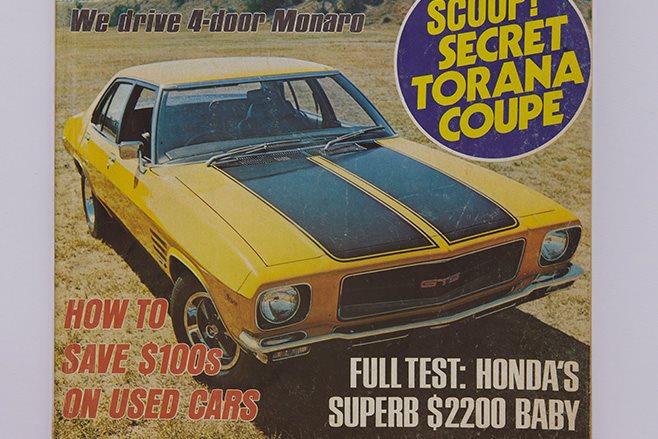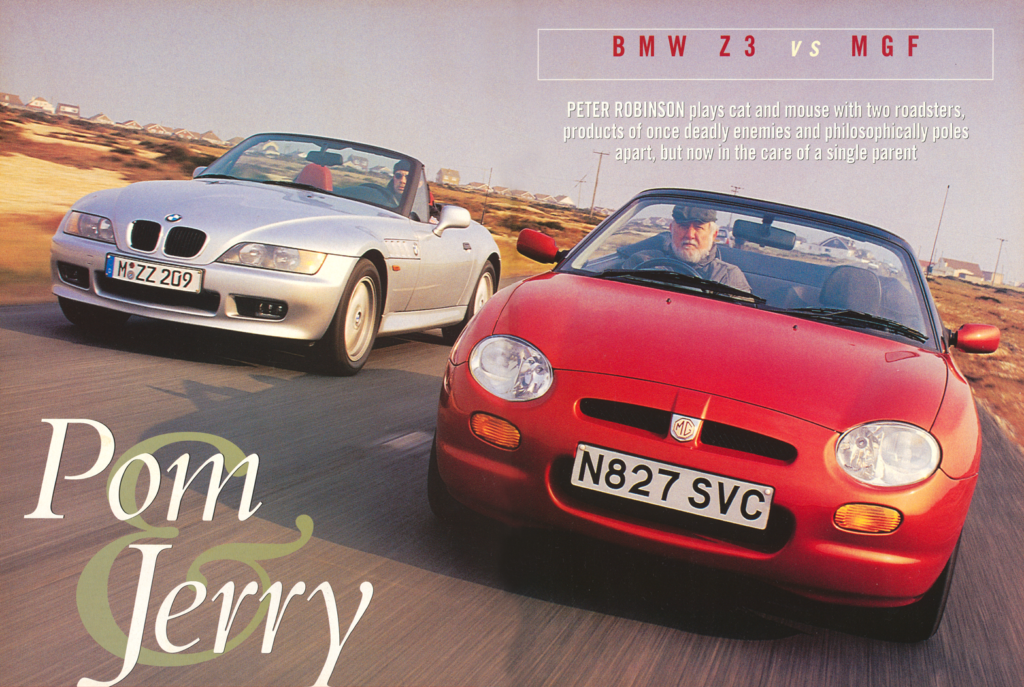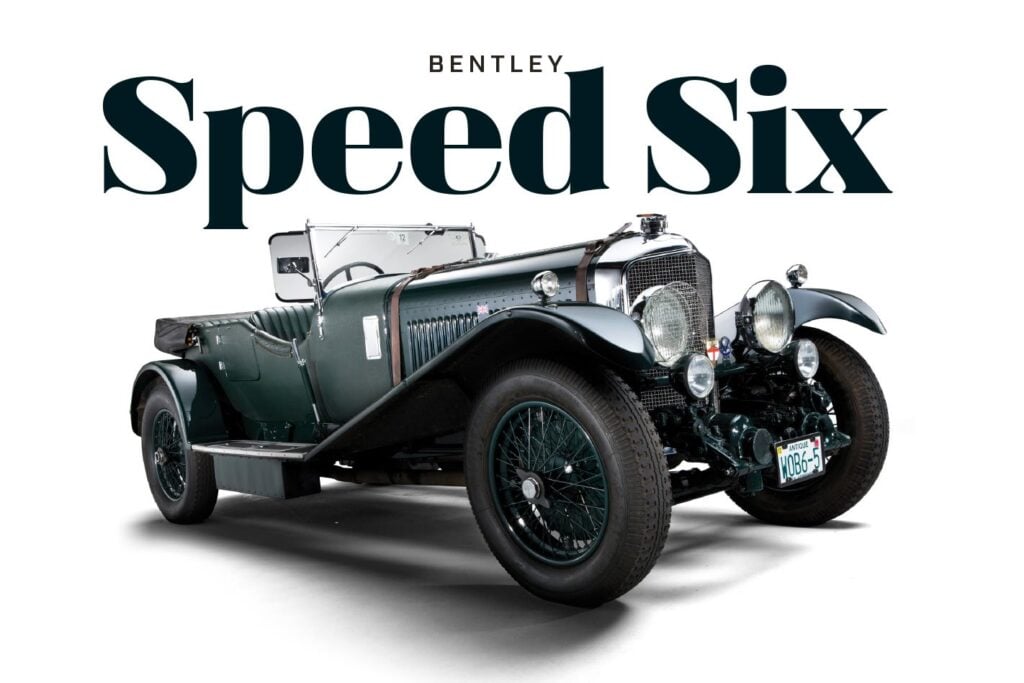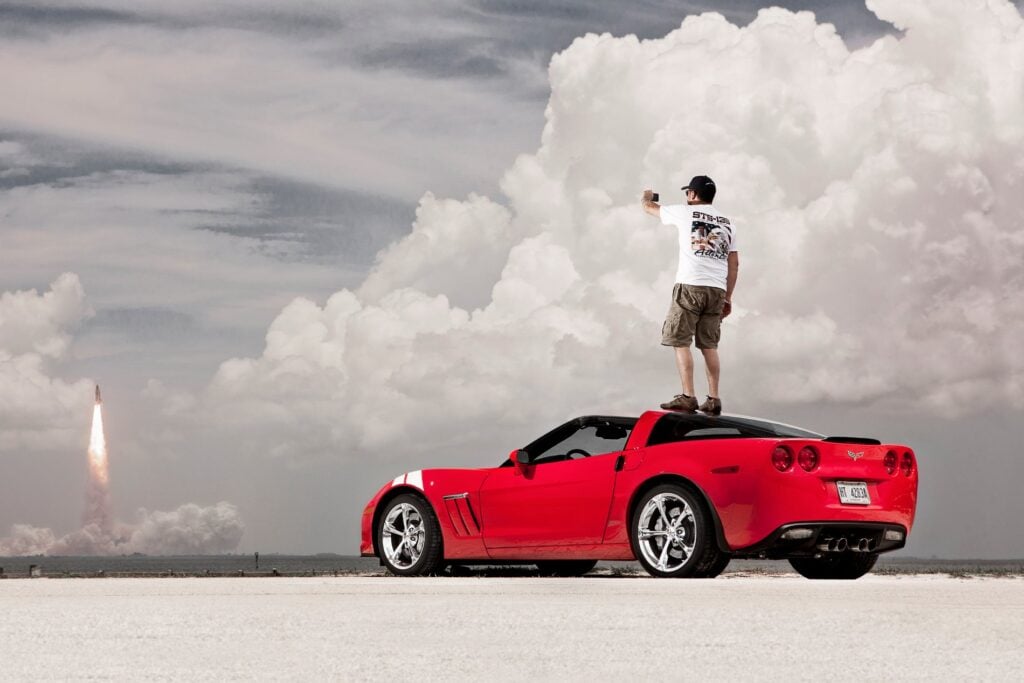A Holden Monaro, flexible speed limits and the open road; the joys of driving around Australia in a by-gone era, as only Bill Tuckey could describe it.
First published in the May 1973 issue of Wheels magazine, Australia’s most experienced and most trusted car magazine since 1953.
“THEY’RE rock farms,” I said.
“What?”
“They’re bloody rock farms. You see all those little white rocks lying around? They keep watering them. When they get big enough they get a tractor and a rake or a winnow or a thresher or a basher or whatever they call them and they rake them up into those small heaps you see there.”
“Then what do they do with them?”
“What do you think? They pick them up in trucks and take them into the city and sell them to people. Rocks are very scarce in the cities in Australia, so they have to grow them in the country. People use them to landscape their gardens. Rock farms, that’s what they are.”
“Bull dust.”
“No way! They water them, and spray them with fertiliser with cropdusters — you know — but it takes a long time for them to grow.”
When I dropped him off at Dimboola, the Canadian with the long hair and the banjo in a battered leather case was going to go into the nearest pub and ask them about the rock farms. I hope they treated him gently.
It is a long time since I spent a long time on the roads of Australia. As one gets older the straight-through overnight dash from Sydney to Melbourne becomes less exotically inviting; one gets to prefer a gin and tonic at 30,000 feet cossetted and befriended by TAA and Boeing.
My memory banks are rich with detail of Trips That Were, and even now I quietly marvel at the resilience or (alternatively) stupidity of the keen-eyed, hot-breathed young motoring journalists who would drive anything anywhere at the drop of a suggestion. (They still do Bill, they still do, Ed).
I remember that for my inaugural issue as editor of WHEELS (actually it was the second which is close enough, Ed), I decided to test the very first Lotus Cortina in Australia. It was in Melbourne, so I organised (of all things!) a Pontiac Laurentian from GM and with photographer John Keesing and our wives we drove down to Melbourne, spent four hours driving and shooting the car, then turned around and drove straight back.
Some time after that I had to drive solo to Melbourne in one of the first Cooper S-types, so I decided to do a Wizard Smith. I strapped a notebook to my leg, mounted four ballpoints and a pencil in the side pocket, and depressed the right foot.
It says a lot for the ability of that little car that I took just seven hours 15 minutes from Sydney GPO to Pentridge Gaol — whence I would undoubtedly land today should I try the same thing. It is certainly not the record for Sydney-Melbourne, but the notebook made interesting reading – particularly the page that took me many days to decipher.
It turned out to be just before the Tucker Box on the road to Gundagai and read: “Nasty right-hander, very bad” … I arrived at it flat at around 95, writing with one hand and fending off disaster with a multiple-jointed elbow and a cry of anguish.
In 1964 BMC (then) decided that to prove out the then-unreleased Morris 1100 it would put together half a dozen two-driver teams and attempt to cover 30,000 miles in 30 days on the public road. Today that would attract governmental censures of manufacturers’ irresponsibility and maniacal disregard for public safety, but then it was just an exciting exercise.
We would go out for four or five days from Sydney, follow mostly fast roads to Adelaide and around and then rest. I was paired with Evan Green who has an extremely fine tenor voice that wailed away over many an hour across the Hay plains. I remember being in Taree at 11 o’clock at night and asking Evan where we would go: He said: “We’ll go to Mildura for breakfast.” So we did. The car reached 30,000 miles in 28 days.
These days, belaboured by thoughts of exposure risk mounting in direct ratio to miles covered, of ever-spreading speed limits and vigilant police equipped with radar and suspicious minds of thicker traffic densities and bigger trucks, driving interstate represents much labour lost.
But it isn’t, really. I have just spent almost a month doing around 8000 miles through Queensland, NSW, Victoria and South Australia, and it has given me a new dimension of being. I drove a base Monaro with 253 cu in. V8, Trimatic transmission, reclining bucket seats, and Uniroyal Steel Cat radials. These proved to be far and far away the best tyres I have ever sat on, but more of them later. I had been to most of the places and over most of the roads at various times in the last 20 years. It should have been an endless bore, mile unreeling after unrelieved mile, but it wasn’t. I drove down an ever-changing tapestry of people and behaviour and places and things.
For me it was a kind of catharsis, a return to the land of my birth, or even a re-numbering of personal priorities. The country is so vast and the life-styles so vividly different that your own existence as a cipher in a great sprawling megalomaniacal metropolis like Sydney seems insignificant. Through the windscreen of a car going quickly over many hours you do begin to question the rightness of your own social order.
The car first: Along with the staff of Wheels, I was probably the country’s nastiest critic of the HQ series. I think at one stage I called it the Great Leap Backward, and the comment was justified at the time. The first HQ Holdens were all bad apart from their very good vision design; they could not be driven remotely enthusiastically, the seats were atrocious, the spring and damper rates wrong and the brakes funny. GM has fixed all these things now, although the washers still suffer from inbuilt menopause and the speedometers break and the fuel gauge moons about like a lover of Cremona.
My respect for the car now is immeasurable. Much of the time it was around 100 mph, and most of that in temperatures of around 10 degrees F. The 253 V8 used not a drop of oil nor water and never altered its tune an inch. The idle rpm was the same at the end as the beginning. The discs squealed from new and speedometer developed stickies, but at 16,000 miles the damned car is brand new.
With the Steel Cats on it was possible to drive it like a Torana. Once on a 150-mile fast trip I started in rain, it dried out and then rain started again. The cruising speed stayed between 90 and 100 in both conditions. These tyres do not change their behaviour one title, not one jot, wet or dry. For the first 2000 miles of their life they are too sticky, you can’t make the car move around, or slide, or change attitudes at all. After that, they do everything right. Every car I buy from now on will wear them.
Let nobody construe this mild rave as putting the humble Monaro into the same class as a Dino or a Porsche 911E or an SM Citroen or a 2-litre Alfa-Romeo. It’s not. Neither does it cost as much.
It’s just that most motoring writers get so bloody subjective, that they measure every car by the limits of their own bravery or foolishness. I fell into the same traps for years. Until you sit your bum in the car for at least 2000 miles spread over a week you can’t even begin to analyse or appreciate the car.
All this yammering about high cruising speeds brings up the point — what about speed limits? South Australia and Queensland have 60 mph absolute limits and Victoria 70. In NSW, about 200 miles around Sydney on every highway now carries posted limits of 70 to 65 mph. However, governments can put up all the signs they like, but if the signs are a joke and the law is obviously stupid, then most drivers just ignore them. Few people before or after speed limits in Victoria and South Australia cruised faster than 60 or 65 anyway. They felt comfortable at that speed. I am convinced that even the police force know it’s a joke. I saw not a single police car or bike on the open road in either State.
As I said in an article in Wheels years ago: Are they really going to book you for 73 mph at 3 am 66 miles west of Bourke? Of course, they aren’t. Across the desert between Mildura and Renmark, or from Bordertown to Murray Bridge, or from Horsham to Ballarat, the police force doesn’t appear to give a damn what speed you do — and the same applies on almost every major Victorian road (except the Hume Highway) from 10 miles outside the town limits.
It’s a different story, in NSW and Queensland. In NSW the police force is dedicated to keeping up its figures, and well-known treasury fund-raising sections like the first 15 miles east of Bathurst, the bottom of the first steep hill north of the Hawkesbury Tollway, the l-o-o-o-o-ng 35 mph zones out of Picton, the last five miles coming into Goulburn, the long 35 mph zone through Cundletown north of Taree, the downhill stretch past the Chullora drive-in in Sydney … display regular visual evidence of the efficiency of the NSW police force. There is nothing like the unmarked Toranas and Falcons of NSW in other States. In fact, Victoria has just launched its first proper interceptors and have painted them with Dayglo orange bands front and rear so you can see them coming.
Queensland, of course, has become so accustomed to jack-booted police work that nothing would surprise them. Any government with the gall to erect permanent signs saying “radar zone ahead” just inside the border on each highway and then neglect any other sign to say the zones have ended is capable of anything. Even so, apart from saturating the Golden Road from Brisbane to Beersheba-on-the-Nerang, the Queensland police just ride around on their white 750 Honda Fours looking faintly like out-of-work cowboys.
However, even Queenslanders are a little shocked by the emphasis NSW has placed on road traffic patrols. In Hay I met a young Adelaide electronics technician on his honeymoon. He was still reeling from the shock he got when a Sydney police constable actually booked him and fined him $20 on the spot for doing a U-turn over double lines. Admittedly it was in George Street at 10 o’clock at night, but the young fellow had a very hurt tone in his voice. I told him that no Sydney driver in his right mind would ever attempt a U-turn over double lines. Sydney drivers are generally better trained, faster, more professional, more aggressive, less courteous; more impatient and more disciplined than any others in the country. This is partly because of their narrow, convoluted streets and the topography. Sydney is so hilly, its roads carrying gullies and corners and bridges and alignments you never see in any other capital except possibly Brisbane, that its drivers have acquired more skill. In Melbourne they are nearly as sharp, except Melbourne’s drivers are handicapped by atrocious sign-posting (the infamous NO CENTRE TURN sign is a dirty grey square nine inches by nine hidden among the overhead tram wires next to a ‘roof awning) and by yawningly wide streets and multiple intersections that give them ample room for error. They’re just lazy.
In Adelaide they are slow, careful, and dull. In Brisbane they are abysmally bad. They don’t know their own road rules, they drive only two feet ahead, and — worst of all — they are plain ignorant and bad-mannered. Not bad-mannered in the way that Sydney drivers are, for that … is simply impatience; but bad-mannered deliberately, rudely and blatantly. All the worst characteristics of Australians as operators of motor vehicles are concentrated in Brisbane drivers. Perhaps it’s because the State gives them a driver’s licence for 10 years free of charge …
These are all, naturally enough, generalisations. You can follow with hundreds of others. But generalisations are depressing and facile.
Those generalisations aside, you absorb a lot of intrinsically useless but fascinating information in the process of sitting still for hundreds of miles. Things like half of South Australia blowing away to New Zealand at the height of the drought-heatwave that mummified much of Australia last January. You ran along the endless open miles of South Australia’s north-western country heading into a huge red cloud perhaps 10,000ft high. As you got into it, it proved to be the red topsoil from the properties beside the road. You had to run for mile after mile on full headlights, oncoming cars looming up on arm’s length away.
Or the new road from Bordertown to Pinnaroo, ultimate Porsche-Ferrari country and probably the finest length of driver’s road in the country … 80-odd miles of fantastic 40ft wide bitumen, desert either side and eddies of white sand swirling in your wake, long flat sweepers capable of accepting 140mph. The road was gravel up to a few months ago. Try it now, before they send the radar team down there.
Or a huge wedge-tailed eagle sitting on a smashed rabbit corpse between Hamilton and Mount Gambier, staring unblinkingly at me with ferocious yellow eyes as I braked down to 50 and 30 and finally having half a loss in the wet as I swerved around the majestic fowl who absolutely refused to move. I hope he didn’t try the same thing with a Peterbilt truck.
Or the small Australian flags that flutter from every third radio aerial on South Australian cars, private cars and cabs alike. It’s a little fetish they have; in Mount Gambier even the rooftop aerial on the local police Valiant sported a national flag. Most police cars in South Australia are blue Valiants; their highway patrol is distinguished only by an extra aerial, extra lights and probably a V8 engine.
And once again I was bemused by the persistent ferocity with which each State clings to its own way of telling the peasants what to do in their horseless carriages. NSW is the only State that uses yellow centre lines, and the only one with broken yellow lines to warn of an unbroken yellow coming up. Victoria uses white only, and puts its white unbroken lines in the queerest places, leaving blind crests with just broken lines and putting double whites along straight flat bits of road.
Signposting in Victoria is improving, but still grubby, and they still insist on marking mile-posts with the distances FROM Melbourne, instead of the miles to the next major town. But then, all roads lead to Rome (Melbourne) … NSW has an interestingly autocratic habit, incidentally, of marking its mileposts only for the town inside the border.
Thus you can be driving between, say, Balranald and Mildura, and the mileposts will give you the distance to some town with a population of two men and a brown dog, ignoring 40,000 people in Mildura just across the border … Victoria’s Main Roads Board absolutely bans all roadside signs except those revoltingly cute anti-bushfire slogans — Don’t be a deadhead, douse that redhead — so you get to the stage where this is absolutely nothing to look at. Fortunately, Victoria is small, and in some ways I prefer this environmental austerity to the visual vulgarity of Queensland, where giant hoardings proclaim the virtues of everything from white ant treatment to cans of beer.
In South Australia they signpost their main highways very well, but kinda forget about the rest, and as half the countryside is desert, you often sit there for mile after mile wondering if you really are going in the right direction.
Of all the roads I travelled, the one with the worst memories is Port Augusta-Whyalla. This lumpy grey track, flanked for most of its length by a pipeline, strides through grey-green saltbush and Pilliga and ochre-red clay pans in a panorama of unrelieved harshness. The day I did the trip it was 42 degrees, and I sat there in my un-air-conditioned Monaro gasping, mouth open, like a goldfish, as the Steel Cats zizzed and sang on the sticky surface and the road ahead dipped and waved and shimmered.
I bought two cans of cold Southward Bitter in Whyalla for the trip back, and it was the silliest thing I ever did, for between Port Augusta and Port Pirie I went a bit light in the head. Must have been the heat … couldn’t possibly have been the booze …
But there were some nice surprises, like whistling along between Swan Hill and Mildura and every 20 miles or so the magnificent moody Murray making a giant U-bend in to touch the highway and then disappear again through the flooded trees and mangroves. Like seeing a Fairlane bowling along the white-yellow flats between Kerang and Swan Hill with a big 15ft Pongrass and a black Hundred Mere bobbing behind it and wondering where the hell is he going miles from the water and a few miles later you sweep past Lake Boga, all bright green grass and rooster tails from the skiers and caravans among the trees.
I picked up only two hitch-hikers the whole time. One was the Canadian whom I regaled with the details of the rock farms, and the other was a young fruit-picker whose ancient Austin A50 just gave up and died noisily south of Barmera. He threw into the boot a split suitcase and a handful of dirty clothes and started to get into the front seat carrying a transistor radio and a six-inch long sheath knife. I said: “The knife goes in the boot, or you stay on the edge of the road.” He may not have meant to use it, or maybe he just wanted to practise skinning peaches, but not on my time.
If you’ve never done anything like all this, never gotten off your bronze and ‘seen something of this unbelievable and charismatic country, then its high time you did. It will stir in you something of what the citified Australian is always’ boasting about- the frontier mentality, mateship, toughness, the outdoors man, bronzed bloody Anzacs.
You’ll never get the feel of it propping up the bar at your local RSL club or street-racing from Binkies Burgers to Brickies’ Road. It makes you proud, and tired, and lonely and romantic, to the point where you wonder if it wouldn’t have been better to have stayed in that little North Coast dairying community where you were born, a one-horse town in which the last horse died in 1927.
I give you a land of beauty, and terror, and colour and desolation and mad strange songs in the overhead wires and puffs of red dust in the distance and a sky so blue that it hurts to look at it.
Go see Australia.





